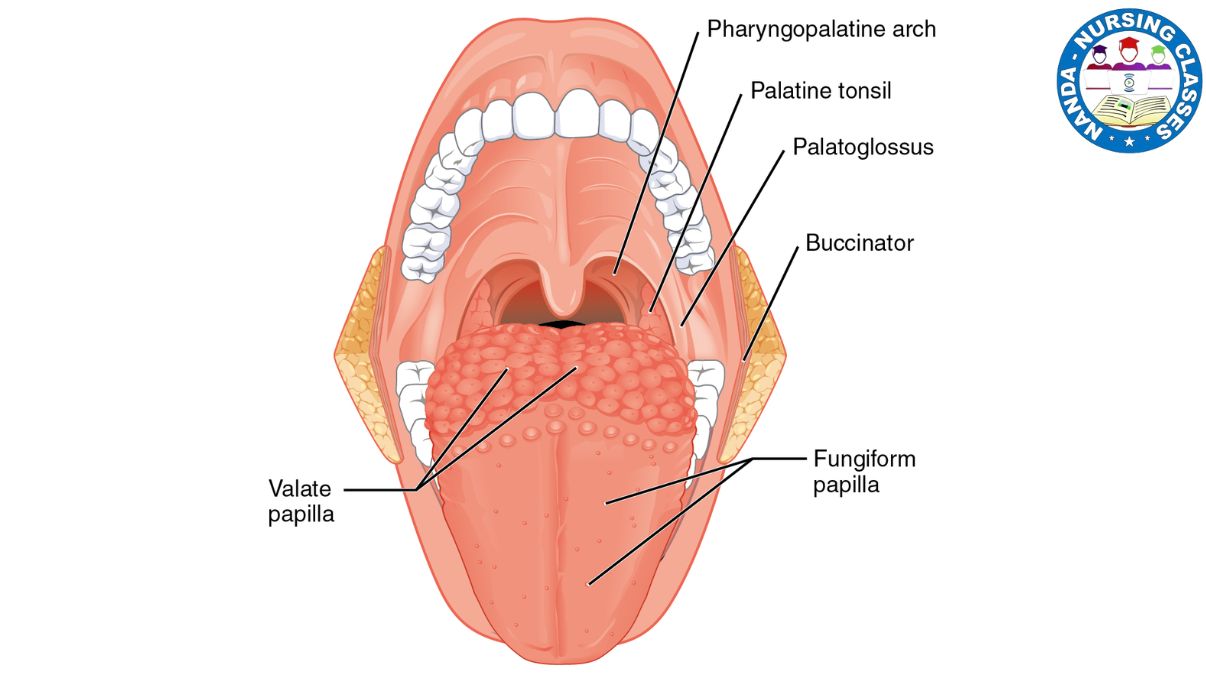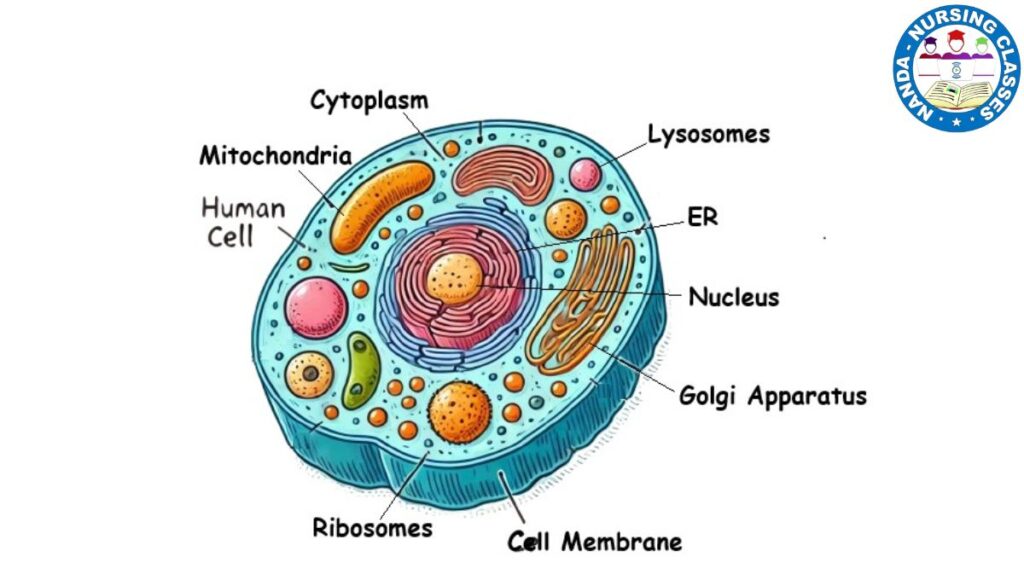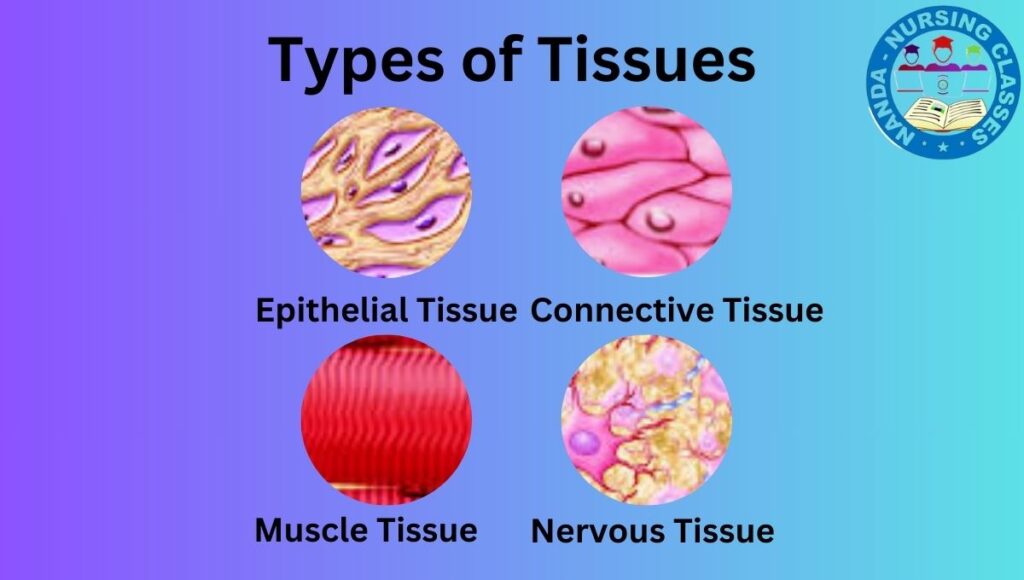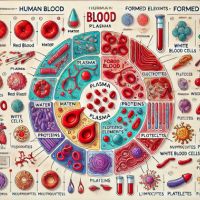The tongue is a powerful muscular organ that plays a crucial role in multiple essential functions, including taste, speech, swallowing, and digestion. Understanding the Anatomy and Physiology of Tongue is vital for nursing students and healthcare professionals, as it provides insight into how this small but complex structure supports both sensory and motor activities in the oral cavity. From taste buds that detect flavors to muscles that aid in moving food and forming words, the tongue is an indispensable part of the human body. This article explores its structure, function, and clinical importance in health and disease.
The tongue is a muscular organ in the oral cavity that plays a crucial role in speech, taste, swallowing, and digestion. It is composed of skeletal muscles, covered with mucous membrane, and contains taste buds responsible for sensory functions.
Anatomy and Physiology of Tongue
The tongue is a remarkable muscular organ located in the floor of the mouth, essential for multiple oral functions. Understanding the anatomy and physiology of tongue is crucial for comprehending how this organ supports speech, taste, swallowing, and digestion. Studying the anatomy and physiology of tongue provides essential insight for healthcare professionals and anyone interested in human biology.
Anatomy of the Tongue
The tongue is divided into two main parts: the anterior two-thirds (oral part) and the posterior one-third (pharyngeal part). It is anchored to several key structures, including the hyoid bone, mandible, styloid process, and soft palate, providing both stability and mobility. The upper surface, called the dorsum, is covered with different types of papillae that contain taste buds and sensory receptors. The tongue’s muscular makeup consists of intrinsic muscles, which change its shape, and extrinsic muscles, which control its position. An elaborate nerve supply ensures the tongue’s precise control over its various functions. Let us learn in a simple way.
Structure and Location
The tongue is a muscular organ located in the floor of the mouth and plays vital roles in speech, taste, chewing, and swallowing. Anatomically, it is divided into two main parts:
-
The anterior two-thirds, also known as the oral part, lies within the mouth.
-
The posterior one-third, called the pharyngeal part, extends into the throat (pharynx).
The tongue is anchored to several key structures in the head and neck, including the hyoid bone, mandible (lower jaw), styloid process, and soft palate. Its upper surface is called the dorsum, which is visible and covered with papillae, while the lower side is referred to as the ventral surface.

Muscles of the Tongue
The tongue is composed of two groups of muscles: intrinsic and extrinsic, both crucial for its mobility and versatility.
Intrinsic Muscles
These muscles are entirely located within the tongue and are responsible for changing its shape (e.g., curling, flattening, narrowing):
-
Superior longitudinal
-
Inferior longitudinal
-
Transverse
-
Vertical
Extrinsic Muscles
These originate outside the tongue but insert into it. They move the tongue in different directions and control its positioning:
-
Genioglossus – Protrudes the tongue.
-
Hyoglossus – Depresses and retracts the tongue.
-
Styloglossus – Elevates and retracts the tongue.
-
Palatoglossus – Elevates the back of the tongue.

Surface Features and Papillae
The dorsal (upper) surface of the tongue is covered with small projections called papillae, many of which contain taste buds:
-
Filiform Papillae: Most numerous; provide texture and friction to the tongue, but do not contain taste buds.
-
Fungiform Papillae: Mushroom-shaped and scattered across the tongue; contain taste buds.
-
Foliate Papillae: Located on the sides of the tongue; contain numerous taste buds.
-
Circumvallate Papillae: Large and dome-shaped, arranged in a V-shape near the back of the tongue; rich in taste buds.
Nerve Supply
The tongue receives motor and sensory innervation from several cranial nerves:
Motor Innervation:
-
Hypoglossal nerve (Cranial Nerve XII): Controls almost all tongue muscles.
-
Vagus nerve (Cranial Nerve X): Specifically innervates the palatoglossus muscle.
Sensory Innervation:
-
Lingual nerve (branch of CN V3 – Trigeminal nerve): Carries general sensation (touch, pain, temperature) from the anterior two-thirds of the tongue.
-
Chorda tympani (branch of CN VII – Facial nerve): Provides taste sensation to the anterior two-thirds.
-
Glossopharyngeal nerve (CN IX): Delivers both general and taste sensation to the posterior one-third.
-
Vagus nerve (CN X): Supplies sensory innervation to parts of the epiglottis and pharynx.
Physiology of the Tongue
The tongue is a highly versatile organ that performs multiple important physiological functions beyond its structural role in the mouth. It is involved in sensory perception, communication, and the initial stages of digestion. The complex coordination of muscles, nerves, and sensory receptors in the tongue allows it to carry out essential tasks such as detecting taste, aiding speech, facilitating swallowing, and assisting digestion. Understanding these functions provides insight into how the tongue contributes to everyday activities vital for survival and social interaction.
1. Taste Sensation
The tongue detects five basic tastes—sweet, sour, salty, bitter, and umami (savory)—through specialized sensory organs called taste buds, which are located primarily on the papillae of the tongue’s surface. When food molecules dissolve in saliva, they interact with these taste buds, sending signals through sensory nerves to the gustatory cortex in the brain. This process allows the brain to perceive and differentiate various flavors, helping guide food preferences and dietary choices.
2. Speech Function
The tongue is essential for clear speech production. By continuously changing its shape, position, and tension, the tongue helps form different sounds and articulate words. Its precise movements work with the lips, teeth, and palate to produce the complex range of phonemes required for verbal communication. Without proper tongue function, speech clarity and fluidity would be significantly impaired.
3. Swallowing (Deglutition)
Swallowing is a coordinated reflex action where the tongue plays a critical role in moving chewed food (bolus) from the mouth into the throat (pharynx). The tongue pushes the bolus backward, initiating the swallowing reflex that safely guides food through the pharynx and into the esophagus, preventing choking and ensuring efficient food passage.
4. Digestion
The tongue contributes to digestion by helping manipulate food inside the mouth, mixing it thoroughly with saliva. Saliva contains enzymes like amylase that begin breaking down carbohydrates, making food easier to swallow and digest further down the gastrointestinal tract. The tongue’s movements also assist in preparing food for chewing and maintaining oral hygiene by clearing food debris.
Common Diseases of the Tongue
Understanding common diseases of the tongue is important for early detection, treatment, and prevention. Here are some frequently encountered conditions:
1. Glossitis
Inflammation of the tongue causing redness, swelling, and pain. It can result from infections, allergies, vitamin deficiencies (like B12 or iron), or irritants.
2. Oral Thrush (Candidiasis)
A fungal infection caused by Candida species, leading to white patches on the tongue and inside the mouth. It often occurs in immunocompromised individuals or after antibiotic use.
3. Geographic Tongue
A benign condition characterized by irregular, smooth, red patches on the tongue surrounded by white borders. The cause is unknown but it is harmless.
4. Hairy Tongue
A temporary condition where the papillae on the tongue elongate, giving a hairy or darkened appearance. It is usually caused by poor oral hygiene, smoking, or certain medications.
5. Tongue Ulcers
Painful sores or ulcers on the tongue that can result from trauma, infections, or systemic diseases such as aphthous stomatitis or cancer.
6. Leukoplakia
White or grayish patches on the tongue that cannot be scraped off. It may be a precancerous condition, often linked to tobacco use or chronic irritation.
7. Tongue Cancer
A serious condition involving malignant growths, often on the lateral sides or undersurface of the tongue. Early detection is crucial for successful treatment.
Conclusion
The tongue is much more than a simple muscular organ in the mouth—it is a multifunctional structure essential for taste, speech, swallowing, and the initial stages of digestion. Its complex anatomy, including layers of intrinsic and extrinsic muscles, diverse papillae, and intricate nerve supply, makes it a critical component of the oral and digestive systems. Understanding the anatomy and physiology of tongue is particularly important for nursing students, medical professionals, and anyone studying human biology, as it connects basic science with practical health care.
By knowing how the tongue functions—through its muscular structure, taste buds, and nervous system connections—we can better appreciate how disorders in this small but powerful organ can affect nutrition, communication, and overall health. Continued learning and early detection of tongue-related diseases can lead to better outcomes and improved oral care practices.
FAQs on Anatomy and Physiology of the tounge
What is the main function of the tongue?
The tongue helps with tasting, chewing, swallowing food, and speaking. It also plays a role in cleaning the mouth and sensing texture.
How is the tongue divided anatomically?
The tongue is divided into two parts: the anterior two-thirds (oral part) and the posterior one-third (pharyngeal part), each having different nerve supplies and functions.
What are the different types of papillae on the tongue?
There are four types of papillae:
-
Filiform (for texture, no taste buds)
-
Fungiform (contain taste buds)
-
Foliate (side of tongue, taste buds present)
-
Circumvallate (large, back of tongue, taste buds present)
Which nerves supply the tongue?
-
Motor nerve: Hypoglossal nerve (CN XII)
-
Taste (anterior 2/3): Facial nerve via chorda tympani (CN VII)
-
General sensation (anterior 2/3): Lingual nerve (branch of CN V3)
-
Posterior 1/3 (taste + sensation): Glossopharyngeal nerve (CN IX)
-
Root and epiglottis: Vagus nerve (CN X)
What part of the brain processes taste?
The gustatory cortex (located in the insular and frontal operculum areas of the brain) processes taste information received from the tongue.
What muscles control the tongue’s movement?
-
Intrinsic muscles (shape the tongue): superior & inferior longitudinal, transverse, and vertical muscles
-
Extrinsic muscles (move the tongue): genioglossus, hyoglossus, styloglossus, palatoglossus
Why is the tongue important for speech?
The tongue changes shape and position to form sounds and articulate words, making it essential for clear speech.
What are common tongue-related disorders?
Glossitis, oral thrush, geographic tongue, ulcers, and tongue cancer are some common conditions affecting the tongue.
How does the tongue help in digestion?
The tongue moves food around the mouth, mixes it with saliva, and pushes it toward the pharynx to initiate swallowing.
Is the tongue made of muscle or tissue?
The tongue is made entirely of skeletal muscle, covered with a mucous membrane.
Key Terms Glossary 🔑 : Tongue Anatomy and Physiology / Terminology
Anterior Two-Thirds
The front part of the tongue, also known as the oral part, lies within the mouth and is involved in speech and taste. It is primarily supplied by the facial and trigeminal nerves.
Posterior One-Third
The back portion of the tongue that extends into the pharynx (throat). It plays a role in swallowing and contains many taste buds. It is innervated by the glossopharyngeal nerve.
Papillae
Small projections on the surface of the tongue that give it texture and house taste buds. Different types of papillae serve different sensory functions.
Filiform Papillae
The most numerous type of papillae. They provide texture to the tongue but do not contain taste buds.
Fungiform Papillae
Mushroom-shaped papillae scattered across the upper surface of the tongue. They contain taste buds and contribute to the sensation of taste.
Foliate Papillae
Found on the sides of the tongue, these papillae are involved in taste perception and contain several taste buds.
Circumvallate Papillae
Large, dome-shaped papillae arranged in a V-shape at the back of the tongue. These contain a high concentration of taste buds.
Intrinsic Muscles
These are muscles located entirely within the tongue. They help in changing the shape of the tongue, which is essential for speech and swallowing.
Extrinsic Muscles
Muscles that originate outside the tongue and attach to it. They help move the tongue in various directions for functions such as chewing and speaking.
Gustatory Cortex
A region of the brain that processes taste sensations. It interprets signals sent from the tongue’s taste buds.
Hypoglossal Nerve (Cranial Nerve XII)
The main motor nerve of the tongue. It controls almost all tongue movements required for speaking, chewing, and swallowing.
Glossopharyngeal Nerve (Cranial Nerve IX)
Supplies taste and general sensation to the posterior one-third of the tongue.
Chorda Tympani
A branch of the facial nerve (CN VII) that carries taste sensation from the anterior two-thirds of the tongue.
Lingual Nerve
A branch of the mandibular division of the trigeminal nerve (CN V3). It carries general sensory information (touch, pain, temperature) from the front part of the tongue.
Deglutition
The scientific term for swallowing. The tongue initiates this process by pushing food into the pharynx.
Oral Thrush
A fungal infection of the tongue caused by Candida species. It appears as white patches and is common in people with weakened immunity.
Glossitis
Inflammation of the tongue characterized by redness, pain, and swelling. It may result from vitamin deficiencies or irritants.
Leukoplakia
White or gray patches on the tongue that cannot be scraped off. It may be a precancerous lesion caused by smoking or chronic irritation.
Geographic Tongue
A benign condition where smooth, red patches appear on the surface of the tongue, bordered by white lines. The cause is unknown and it’s usually painless.
Taste Buds
Specialized sensory receptors located on papillae. They detect five primary tastes—sweet, sour, salty, bitter, and umami.
Speech Articulation
The clear formation of speech sounds. The tongue works with other oral structures to pronounce consonants and vowels effectively.
if you want to know anything just comment it
You can save the image of terminology or maybe download a PDF

That’s all for now about the anatomy and physiology of tounge. If you have any questions or doubts, feel free to ask in the comment section below, or you can reach out to us directly through our social media accounts. We’re here to help you learn better!
We have divided the sensory organs into five sections for your convenience. You may read each part by clicking on the topics listed below:
Part 1 – Skin 🖐️
Part 2 – Eyes 👁️
Part 3 – Nose 👃
Part 4 – Ears👂
Part 5 – Tongue 👅
If you liked this post, please share it with others. Feel free to leave a comment below if you have any questions or feedback!





